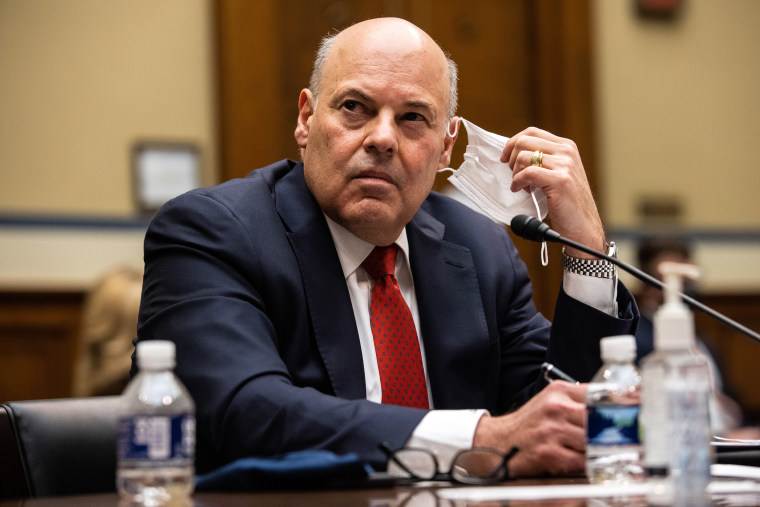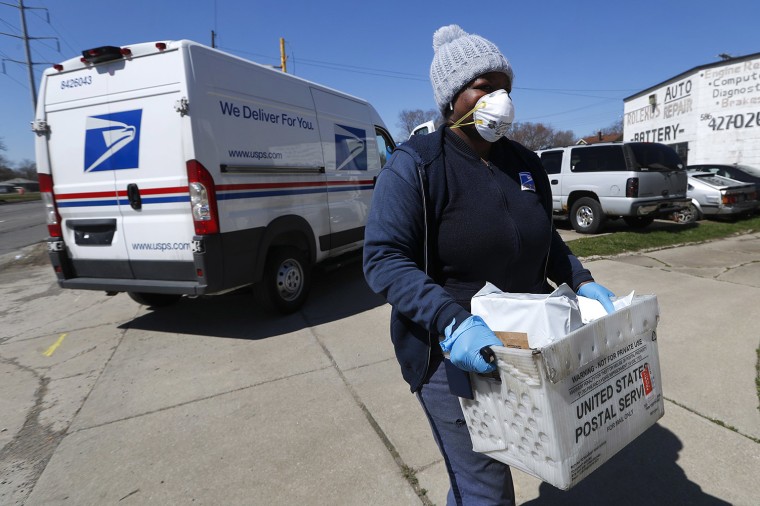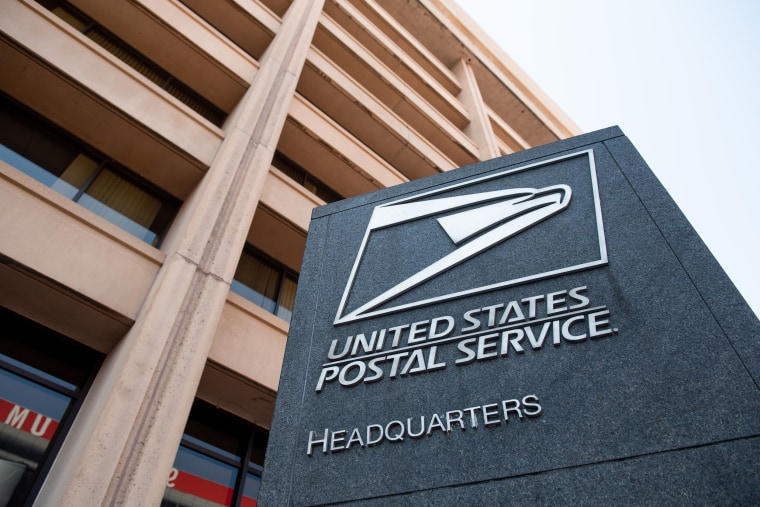When U.S. Postmaster General Louis DeJoy laid out plans Tuesday for the future of the post office, he pointed to higher postage rates and slower first class mail as a means of stemming postal service losses he says could reach $160 billion.
But missing from his new 10-year plan were two ideas economists, members of Congress and consumer advocates say could generate billions of dollars for the beleaguered service and bring the post office into the 21st century: a return to postal banking and the post office’s entry into the lucrative alcohol delivery business.
“We don’t expect the post office of the 21st century will be the same as the post office of the 20th century,” said Rakim Brooks, senior campaign strategist for the American Civil Liberties Union. “People are using the mail less, and we think that the institution has to provide new services.”

Postal banking, he said, is among the new services the post office of the 21st century could — and should — provide. It would include basic banking services, including check cashing, providing low- or no-fee checking accounts, installing low-fee ATM machines, and providing wire transfer and bill payment services.
“Postal banking is a win-win solution: It can help the post office’s bottom line and serve millions of Americans that are currently underbanked and unbanked,” Brooks said, referring to the more than 30 million Americans who do not have sufficient access to mainstream financial services or who have no bank accounts at all, often because of the fees associated with traditional commercial banking.
Postal banking is not a new concept. Banking was part of the menu of services the post office offered for decades, beginning in 1910 when Congress established the Postal Savings System to encourage people to put their money in financial services. By 1947, the postal banking system had $3.4 billion in deposits. But in the 1960s, interest in the program waned when commercial banks started offering higher interest rates, and in 1967 postal banking was phased out.
Porter McConnell, who runs the Save the Post Office Coalition, says it’s now time for postal banking to make a comeback.
She points to a 2014 report from the Postal Service Office of the Inspector General that indicates postal banking could generate $9 billion in new revenue for the post office.
“I’ve been working on postal banking for three years,” McConnell said. “The idea is definitely catching on. Now the conversation with officials has gone from whether postal banking will work, to how it will work and how we can design it so that it has maximum impact.”
The Postal Service has been losing money in recent years as a result of a combination of factors, primarily the high cost of fulfilling a mandate to prepay retirement benefits decades in advance, as well as a reduction in first class mail volume, growing competition, and rising compensation and benefits costs.
McConnell said postal banking could help raise critical revenue and serve the public, noting consumer advocates would find it particularly appealing to have a post office that's able to provide consumers with digital wallets, low-fee ATM machines and an ability to cash checks without paying the often-exorbitant fees that check-cashing establishments charge.
Also in favor of postal banking: a growing number of economists, including Melanie Long, an assistant professor of economics at The College of Wooster in Wooster, Ohio.
“Postal banking has been used in other parts of the world to democratize services,” she said, noting that postal services in 139 countries around the world offer some form of financial services.
Long said it makes sense for post offices to double as banks, especially given the growing number of “bank deserts” in the U.S., communities in which there are no commercial banks.
Between 2008 and 2020, over 13,000 bank branches closed in the U.S., representing 14 percent of all branches, according to the National Community Reinvestment Coalition.
Many of those bank closures occurred in rural and socioeconomically challenged communities, she said.
“A lot of commercial banks argue it’s not profitable to operate branches in those areas,” Long said.
Congress is taking notice of postal banking. Last year, Sen. Kirsten Gillibrand, D-N.Y., and Sen. Bernie Sanders, I-Vt., introduced the Postal Banking Act, aimed at providing consumers with bank accounts and mobile banking services.
In a statement, Gillibrand noted, “Postal banking is an elegant solution that would provide the USPS upwards of $9 billion a year in revenue and would address the high cost of being poor in America by eliminating payday loans, check cashing, and other predatory financial products.
“Instead of trying to gut the USPS … DeJoy should recognize the unique opportunity it has to reach millions of working Americans.”
According to David Partenheimer, a spokesperson for the Postal Service, it is open to exploring the possibility of postal banking, “to the extent our research concludes that we can legally provide additional services while making a positive contribution to our finances and without distracting from our core business.”
The American Postal Workers Union supports postal banking, calling it a “win-win-win proposal.”
“Adding additional financial services would bring in much-needed new revenue for the USPS, while taking advantage of postal workers’ skills and their place of trust in communities, and providing a critical public service,” it said in a statement.
In 2019, the union called for the launch of a pilot program, in which postal banking services could be tested in four locations. Suggested locations included Cleveland and the Bronx borough of New York City.
Just as McConnell believes postal banking could provide additional revenue for the Postal Service, she notes that shipping alcohol could also generate money for it.
FedEx and UPS are currently allowed to ship wine, beer and spirits, but because of Prohibition-era legislation, the Postal Service is not.
According to the Congressional Budget Office, the Postal Service could make an additional $50 million a year if it were to be able to ship alcohol.

Online alcohol sales have seen exponential growth in recent years. According to an IBISWorld report, the online beer, wine and liquor industry in the United States is a $1.2 billion business, growing at a rate of 8 percent a year.
In 2019, Rep. Jackie Speier, D-Calif., introduced the bipartisan USPS Shipping Equity Act, a bill which would enable the Postal Service to ship alcohol.
“In most states, private carriers such as FedEx and UPS are already delivering alcoholic beverages,” she said at the time. “It makes no sense to create a competitive disadvantage for the USPS by barring them from these kinds of shipments, especially given the Postal Service’s dire financial condition.”
McConnell added that “owners of microbreweries in particular are really hopeful that the post office might be able to start shipping their products in the near future.”
In a statement, the American Postal Workers Union said it supports the expansion of the agency’s services to include alcohol delivery. “Allowing the USPS to ship beer and wine is a common-sense step that allows customers better access to this growing trend … There’s no good reason why beer and wine couldn’t be included with other mail and packages.”
As the post office eyes its future, postal advocates like McConnell are hopeful it’s allowed to take on new services and play new roles in the communities it serves.
“There’s a history of Congress messing with the post office and saying, ‘Look – it’s broken, you have to fix it.’ The post office is not broken. It can be fixed. Allowing the post office to evolve and expand its services can help fix it.”


